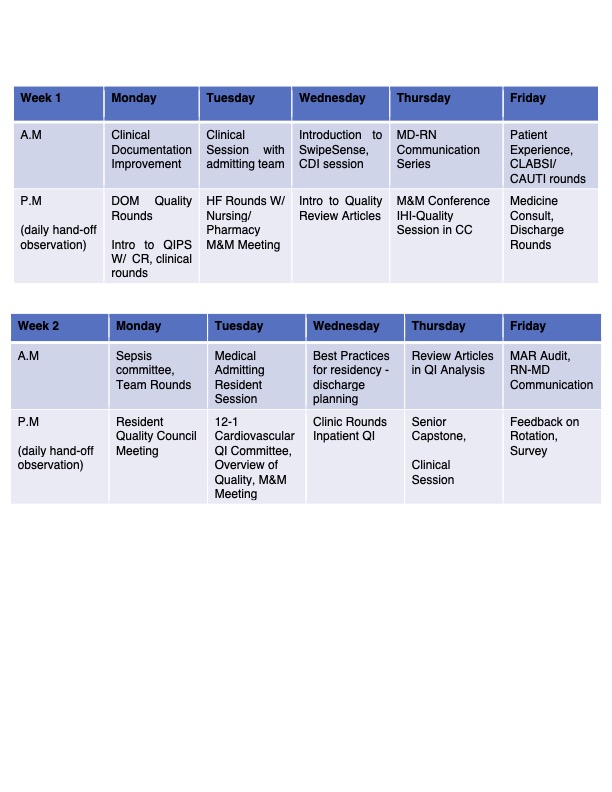Background: The Accreditation Council for Graduate Medical Education (ACGME) states that residents must participate in quality improvement (QI) and patient safety (PS) initiatives during their residency training. At our institution, we have embedded multiple levels of QI and PS education into our internal medicine residency program. Our longitudinal QIPS curriculum begins in each resident’s intern (PGY-1) year and continues throughout their residency in a stepwise fashion. Prior to residency, foreign medical students often participate in observer rotations to gain clinical exposure and experience in the United States healthcare system. However, these observerships are predominantly focused on clinical observation.
Purpose: With the growing focus on quality improvement initiatives in healthcare systems, we designed and implemented an immersive observership rotation geared towards quality improvement, patient safety, and performance metrics in the department of medicine. In addition, we acknowledged the importance of clinical experience to foreign medical students and designed our observership to include both medicine admitting and consulting team experiences. The goal of this observership is to better prepare observers for internal medicine residency training in the United States, not only through clinical experience, but also with a focus on education in QI and PS before entering into residency.
Description: Our QI observership is a two-week-long rotation that involves both in-person and virtual platforms. The observer works closely with the quality chief resident, the medical admitting resident, the medical consultation resident, and the vice-chair for quality improvement and patient safety. Observers gain a thorough foundation in QI through multiple education activities including the clinical documentation series, the quality data analysis sessions, heart failure sessions, Institute for Healthcare Improvement (IHI) open school curriculum, pharmacy medication reconciliation sessions, the RN-MD communication series, and the voice of the patient sessions. They also learn how to perform a root cause analysis and the process of creating and presenting a morbidity and mortality conference.
Conclusions: We have created a two-week-long unique and innovative clinical and quality improvement hybrid rotation for observers in the department of medicine at our institution. With the evolution of healthcare with a growing focus on QI and PS initiatives in medicine, observers will come away from this rotation with a solid foundation in these domains, thereby facilitating a smoother transition to residency. In addition, our curriculum is adaptable and can be implemented at other institutions interested in creating an observer rotation focused on quality improvement initiatives in the department of medicine.

